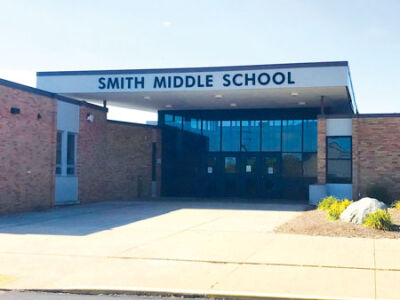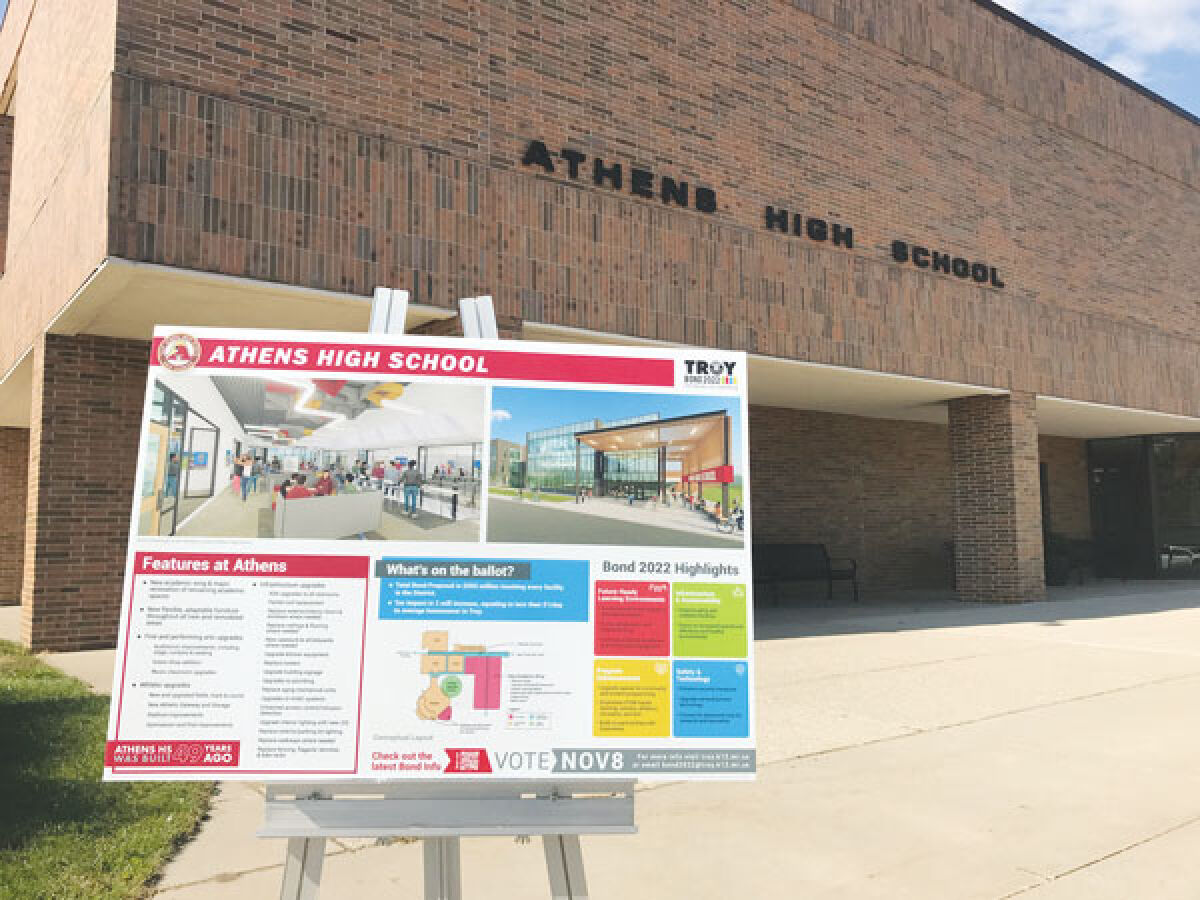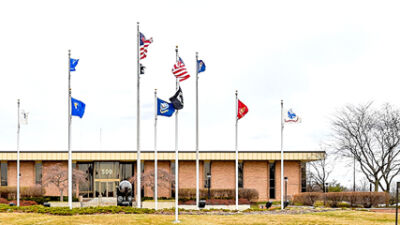
The aging Smith Middle School will be rebuilt should the Troy Public Schools bond proposal be approved.
Photo by Brendan Losinski
TROY — Voters will decide on a Troy School District bond measure to improve and replace aging facilities in the district on the upcoming Nov. 8 ballot.
The bond is asking to “borrow the sum of not to exceed $550 million” and is expected to levy a millage collection on residents at or below 6.10 mills, which is an increase of 2 mills over the 4.10 mills previously levied up through 2022.
“A bond can only be used for capital expenditures and upgrades for a building. It’s not going into salaries,” said Kerry Birmingham, the director of communications and strategic initiatives for the district. “The state treasury has to approve anything we spend this money on. It’s $550 million, which is a big ask for the community. We have not asked for a tax increase in the Troy district since 1989. We don’t take this request lightly. We think the investment per taxpayer is a reasonable return on their investment in regard to not only stronger schools but stronger property values. A lot of people move here for the Troy School District.”
The bond proposal is supported by Citizens and Parents for Education, a committee that was formed to support the proposal. Alison Hendry, its co-chair, said the bond is crucial for the future of the district.
“If passed, the bond proposal will get our schools ready for the future of learning,” she said. “It will refurbish all of our school buildings and some of the administration buildings. A lot of it are facilities issues that after five or 10 years need to be repaired or replaced. It also will do some major work at Athens High School and build a new Smith Middle School, since the state of the school requires a new building rather than just refinishing.”
Hendry said the bond will pay for a variety of improvements she said have been a long time coming.
“Every single building will have upgrades to the guts of the building,” she explained. “This is things like heating, cooling and technology. Some will be getting new furniture that will allow more flexibility to adapt to new needs in classrooms. … At the elementary school level, many are getting a third kindergarten classroom, and kindergarten classrooms tend to be bigger than the other classrooms. Some of our buildings will be getting new rooms for music or art, which now have teachers moving from classroom to classroom on carts, or in the high schools, the spaces they have are far too small. There also will be upgrades to media centers in some of the buildings as well.”
She said the biggest portion of the money would go toward Athens High School to create a new wing providing more classroom space.
“They are going to construct a new academic wing of the building rather than just refurbish many of the existing classrooms,” Hendry added. “There’s only so much you can do with (the current) space, though, and some classrooms were too small or otherwise unworkable with the school’s current needs. Too many fixes would be needed to adapt what rooms they already have to the point where it made more sense to rebuild those classrooms.”
The other major project funded by the bond money would be a new building for Smith Middle School.
“When this process began, there was about a year-long process with community members coming together and providing reports on the buildings,” said Hendry. “An assessment was done of Smith Middle School, and there is a formula they do to calculate the costs of refurbishing it according to its needs versus building a new building, and it was less expensive in the long term to build a new building as opposed to repairing one that is nearly 60 years old.”
Birmingham said the improvements are needed to keep up with the changing needs of schools, to repair aging infrastructure, and to meet safety requirements.
“Our schools are aging. The average age of our buildings is 48 years old. Some are well over 55 years old. They are showing their age,” she said. “The district has done a good job patching roofs and patching sidewalks, but after a certain point, roofs have to be replaced and sidewalks have to be repaved. This bond would not only address those infrastructure needs in the district, but they also would improve safety in the schools as well.”
Birmingham went on to say that this is the first increase to taxpayers for the school district in more than three decades.
“This will cost the average homeowner in Troy less than a dollar a day. Many will pay less than that. It’s based on the taxable value of your home,” she said. “The collection from taxpayers hasn’t increased since 1989. We have assessed up to 4.1 mills since then, and that was last approved in 2013. If not approved, it would taper off over time. ... By the second year, the 6.1 mills people would be paying if this is approved, would start going down the same way a mortgage goes down over time.”
She said the Troy district is not currently collecting an equal amount compared to neighboring districts.
“Seven school districts operate with the city of Troy and the Troy School District is at the low end of the amount assessed,” Birmingham said. “Royal Oak is a tiny bit below us, but Birmingham, Bloomfield Hills and the others assess an equal or greater number of mills than we do.”
The number of proposed projects to be used with the bond money were decided upon after several months of research and looking at the needs of the district, officials said.
“This is really a communitywide effort. We brought together 62 community members to study all of our facilities and schools in the district and look at the needs of those schools, from the HVAC to the classrooms to the technology,” said Birmingham. “They looked over the course of nine months alongside industry partners to see what our needs are and recommended a bond proposal well over $700 million, and the Board of Education said that was too big of an ask for the community, so the members went back and looked at what they could take off while still taking care of the current and future needs of the district and turned it into the $550 million proposal.”
Birmingham hopes voters in Troy will see the bond measure as the district ensuring a strong future for its children.
“For us, it’s a chance to truly modernize our learning experiences and bring our students the opportunities surrounding districts can provide,” she remarked. “We appreciate the support our community has given us. We have gotten a really positive response when we talk about this bond.”
“Even if you don’t have a student in the schools, so much of the community’s home values are based on the quality of the school district. We all benefit from having a strong, well-funded school district,” added Hendry. “It’s less than a dollar a day for the average household in the community so I think it’s well worth the cost.”
 Publication select ▼
Publication select ▼





















